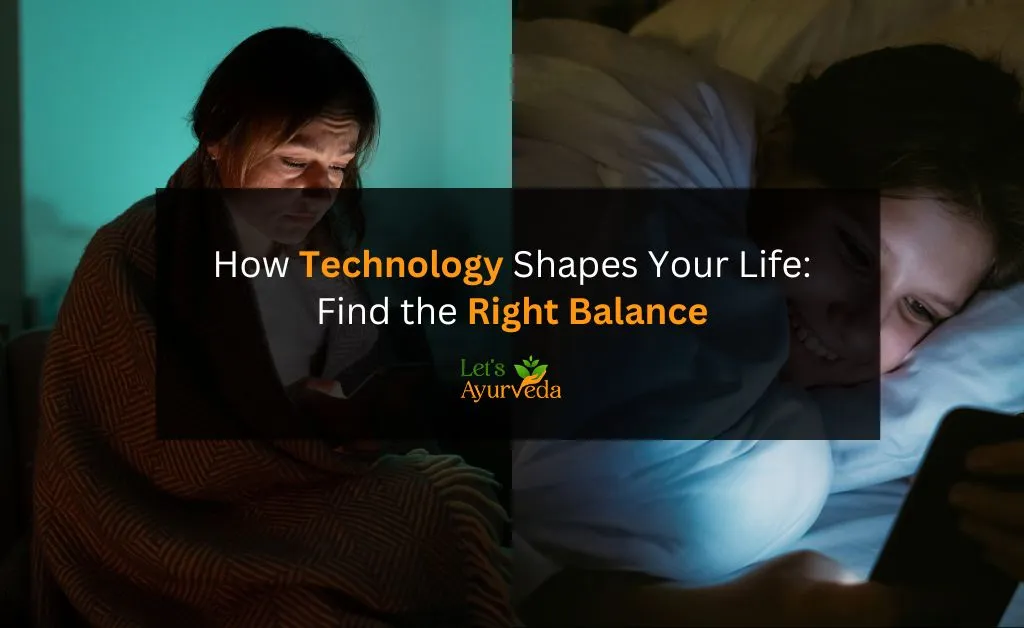Technology is everywhere. It helps us stay connected, learn new things, and even make our daily tasks easier. But have you ever wondered how much technology is too much? While it offers many benefits, too much screen time can also affect our health and relationships. Finding the right balance is key. In this blog, we’ll explore how technology shapes your life and how you can use it in a way that keeps you happy and healthy.
How Technology Shapes Your Daily Life
Technology is a part of everything we do. Let’s take a look at how it affects different areas of life.
1. Education and Learning
You can now learn almost anything online. Whether it's a new language, science experiments, or history lessons, the internet makes education more fun and interactive. Apps and websites provide videos, quizzes, and games that help make learning easier. But staring at screens for too long can be tiring. That’s why it’s important to take breaks and also learn from books and real-life experiences.
2. Social Connections
Technology helps us stay in touch with family and friends, no matter where they live. Video calls, messages, and social media bring us closer. However, spending too much time online can take away from real-life conversations. Face-to-face talks are important too! Balancing online and offline friendships keeps relationships strong.
3. Entertainment and Hobbies
From watching movies to playing games, technology gives us endless entertainment options. It’s fun, but too much screen time can reduce outdoor play, exercise, and time with family. Setting limits on screen time helps make room for other fun activities like sports, reading, or crafting.
4. Health and Well-Being
Technology has improved healthcare with apps that track fitness, diet, and sleep. You can watch workout videos or meditate using mobile apps. But using gadgets before bedtime can make it hard to sleep. Keeping screens away before bed and enjoying outdoor activities can help you stay healthy.
5. Daily Tasks and Convenience
Smart home devices, online shopping, and digital payments make life easier. You can order food, pay bills, and even control home appliances with just a few clicks. But it’s important to still enjoy real-life experiences, like cooking meals, shopping in stores, or doing small household tasks on your own.
The Downsides of Too Much Technology
While technology makes life easier, too much of it can cause problems. Here’s how:
1. Reduced Physical Activity
Spending long hours on devices can mean less movement. This can lead to health issues like obesity and weak muscles. Playing outside, taking walks, or doing simple exercises helps balance screen time.
2. Less Face-to-Face Interaction
If you spend too much time texting or on social media, you might miss out on real conversations. Meeting people in person builds stronger relationships and better communication skills.
3. Distraction and Short Attention Span
Constant notifications and quick entertainment options can make it hard to focus. Reading books, playing board games, and practicing patience help improve attention span.
4. Sleep Problems
Looking at screens before bed can make it harder to sleep. The blue light from screens affects sleep hormones. A good rule is to stop using gadgets at least an hour before bedtime.
5. Dependence on Devices
If we rely too much on technology for everything, we might forget basic skills like reading maps, writing by hand, or even doing simple math without a calculator. Practicing these skills keeps our minds sharp.
Finding the Right Balance: Healthy Tech Habits
Technology is helpful, but using it wisely is important. Here’s how you can create a balance between screen time and real-life activities.
1. Set Time Limits
Decide how much time you’ll spend on screens each day. Taking breaks and following a schedule helps prevent overuse.
2. Use Technology for Learning and Creativity
Instead of just watching videos, try learning new skills online, like drawing, coding, or playing an instrument. Using technology in creative ways makes it more useful.
3. Take Breaks from Screens
Follow the 20-20-20 rule: Every 20 minutes, look away from the screen for 20 seconds at something 20 feet away. This helps reduce eye strain.
4. Spend More Time Outdoors
Go for a walk, ride a bike, or play outside with friends. Fresh air and physical activity are great for your body and mind.
5. Have Device-Free Zones
Keep gadgets away from certain places, like the dining table and bedroom. This encourages more family time and better sleep.
6. Read Physical Books
Instead of always reading online, pick up a book or magazine. Reading from paper reduces screen time and helps with focus.
7. Prioritize Face-to-Face Conversations
Make time for real conversations with family and friends. Talking in person builds stronger connections.
8. Use Technology to Help You Stay Active
Try fitness apps, online workout videos, or music to make exercising more fun.
Conclusion: Technology in Balance
Technology is a powerful tool that makes life better in many ways. It helps us learn, stay connected, and be entertained. But using it too much can have downsides. The key is to find the right balance. By setting limits, taking breaks, and enjoying real-world activities, we can use technology in a way that keeps us happy and healthy.
So, let’s take control of how we use technology and make sure it adds value to our lives instead of taking away from important moments. How will you balance your screen time today?






